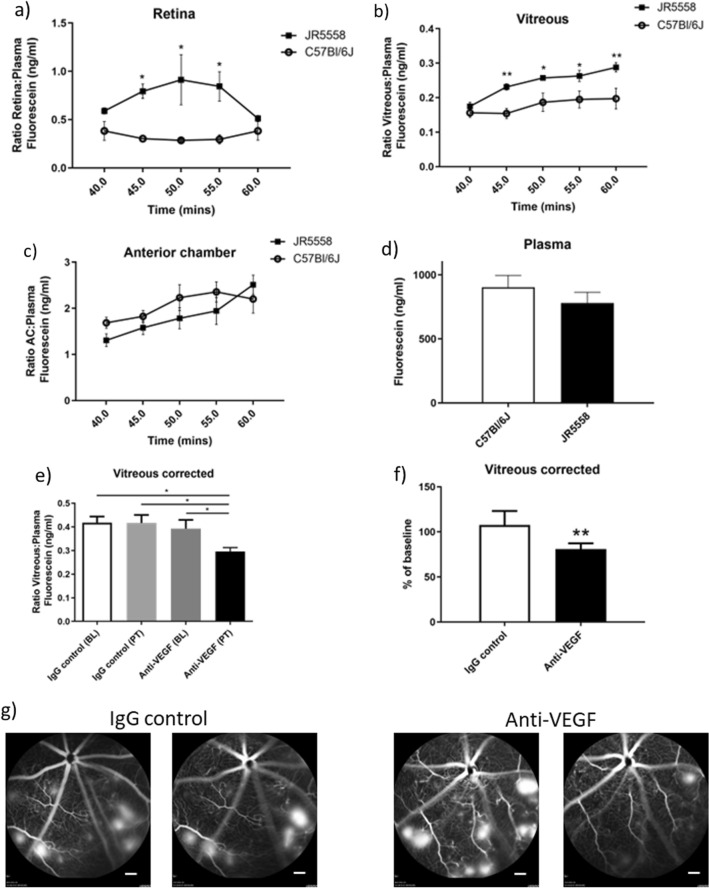Figure 5.
Quantification of permeability in the JR5558 spontaneous CNV mouse model, and response to anti-VEGF treatment measured using fluorophotometry. (a–c) Male and female JR5558 and age-matched control C57Bl/6J mice were injected subcutaneously with 50 mg/kg fluorescein, and time courses of ratios of fluorescein levels corrected to plasma in separate eye compartments were measured. JR5558 mice had significantly increased fluorescein levels in (a) the retina and (b) the vitreous compared with C57Bl/6J mice. Levels of fluorescein in (c) the anterior chamber and (d) plasma were not significantly different. (e–g) JR5558 mice were dosed at baseline (day 0) and day 3 intraperitoneally with anti-VEGF or IgG control antibodies, and fluorescein leakage was quantified using fluorophotometry at baseline, and day 7. Levels of fluorescein corrected to circulating plasma were measured 45 min after subcutaneous fluorescein administration. (e) Anti-VEGF treatment significantly reduced the amount of fluorescein in the vitreous to approximately 77% of baseline (f), whereas IgG control had no significant effect. (g) Representative fluorescein angiography images of JR5558 mice eyes at baseline (left panels for each treatment group) and post-treatment (right panels for each treatment group) following IgG or anti-VEGF treatment. N = 3–6 eyes for time courses, N = 12 eyes per group for IgG and anti-VEGF treatments Scale bars = 500 µm. Ocular compartment leakage assessed statistically by Two-way ANOVA with repeated measures, followed by Bonferroni’s multiple comparison test. Baseline and post-treatment corrected vitreous fluorescein concentrations were assessed by One-way ANOVA followed by Newman Keul’s multiple comparisons test. Percentage change from baseline assessed statistically by unpaired T-test. *P < 0.05, **P < 0.01. Data are given as means ± SEM.

